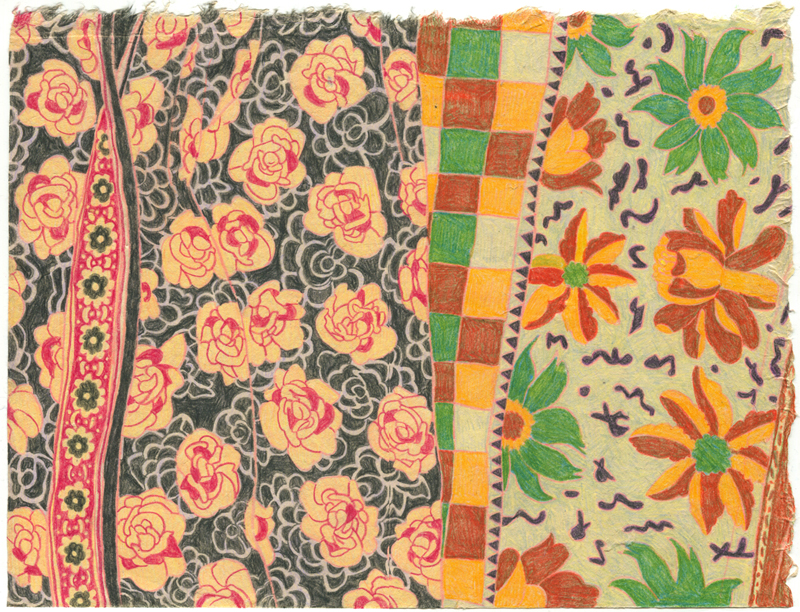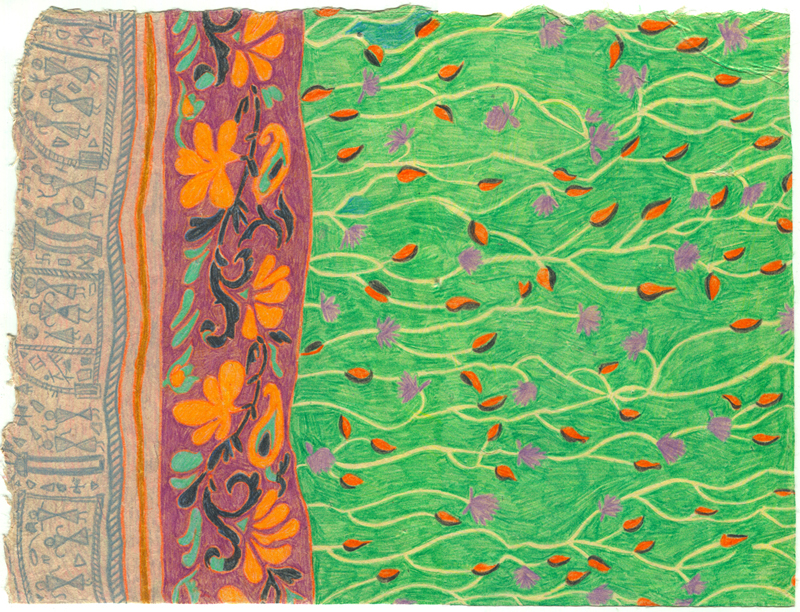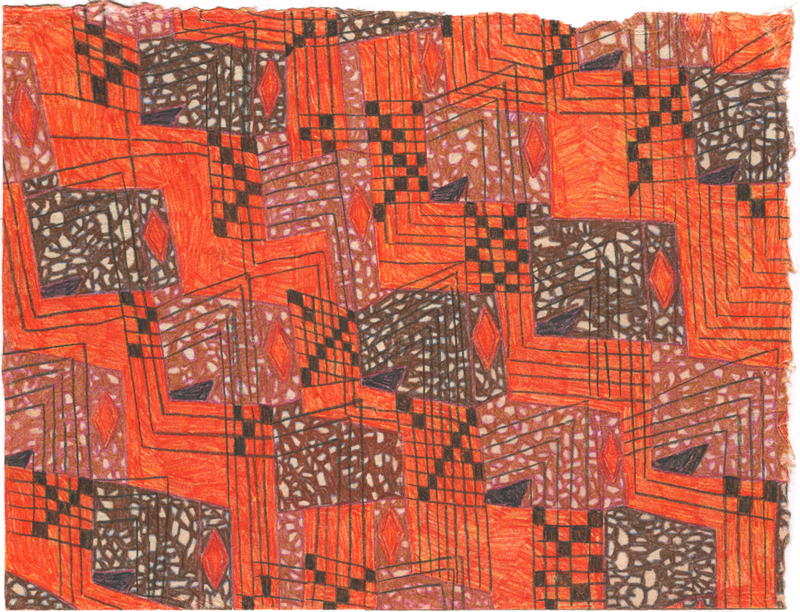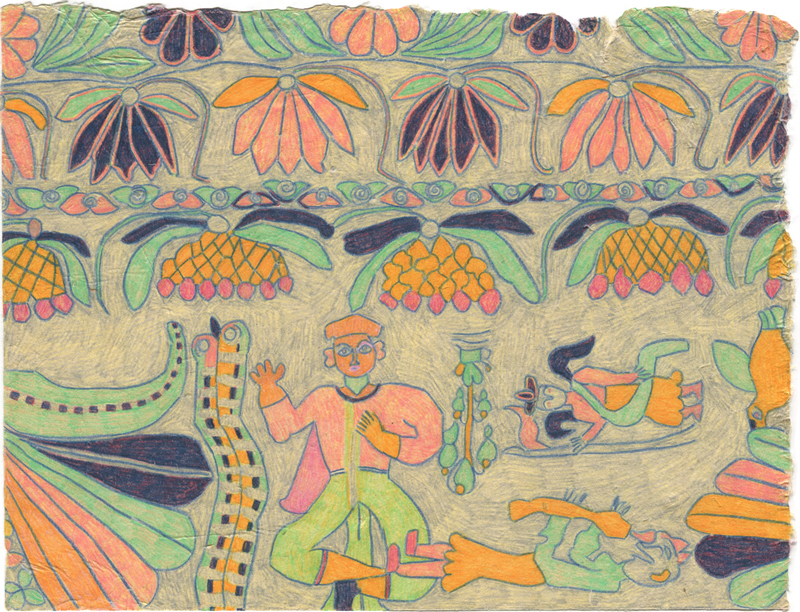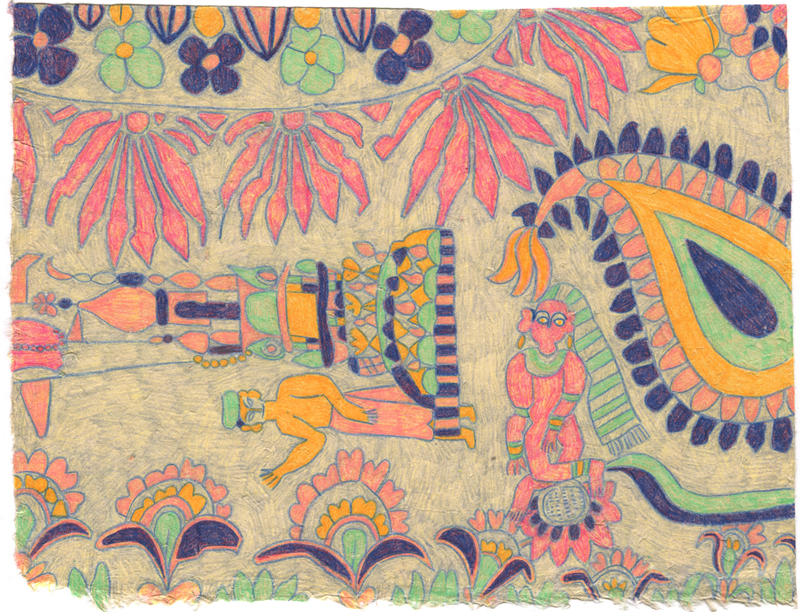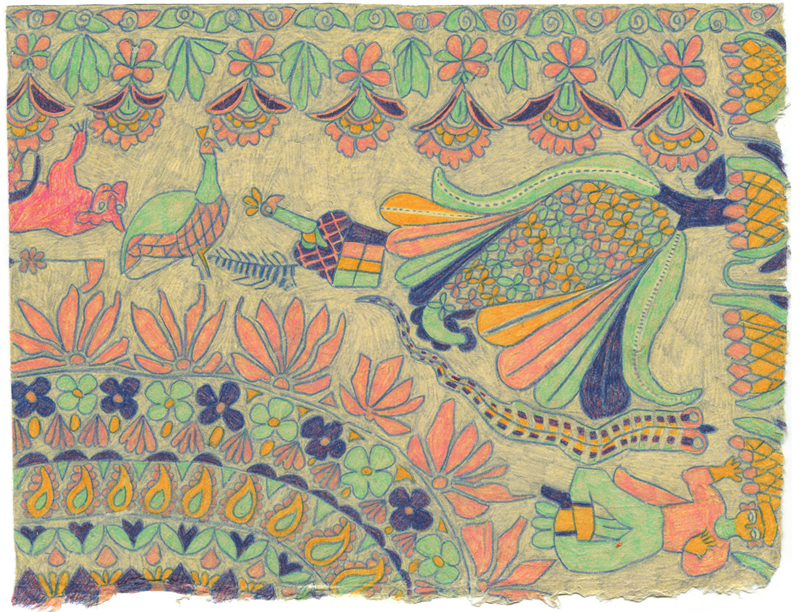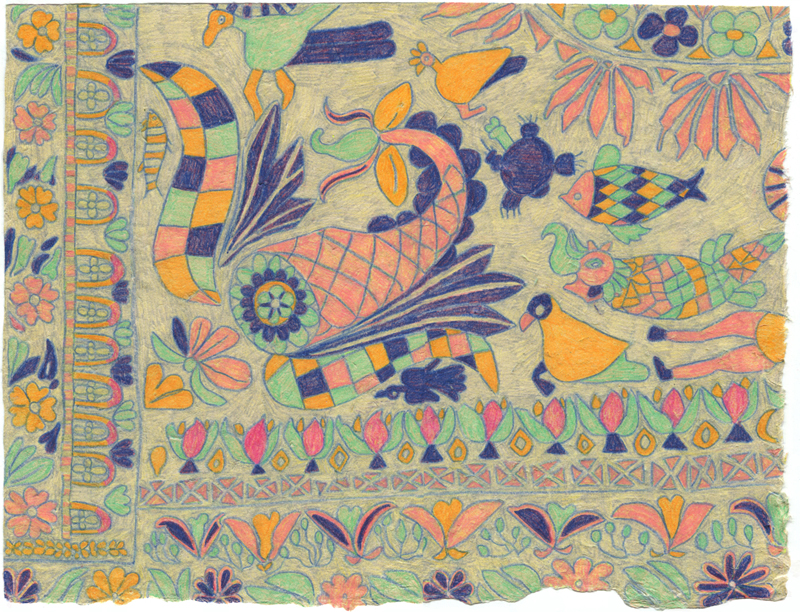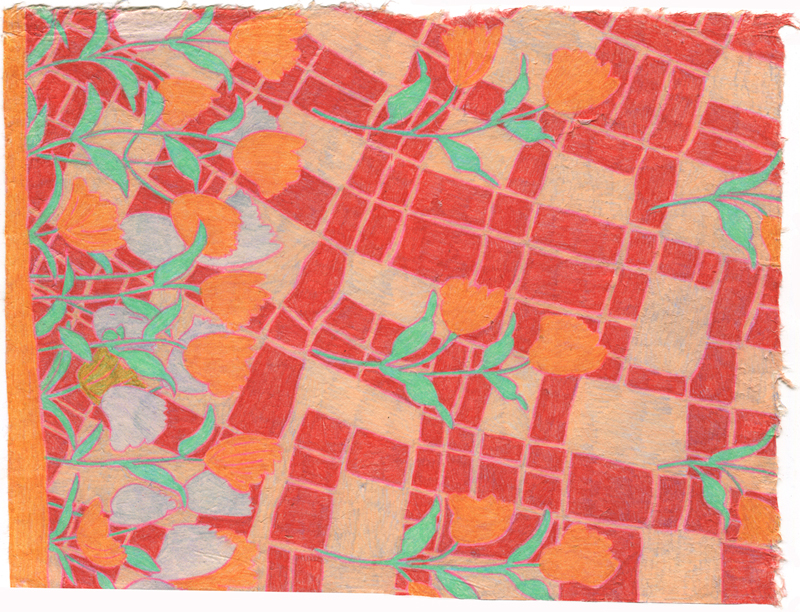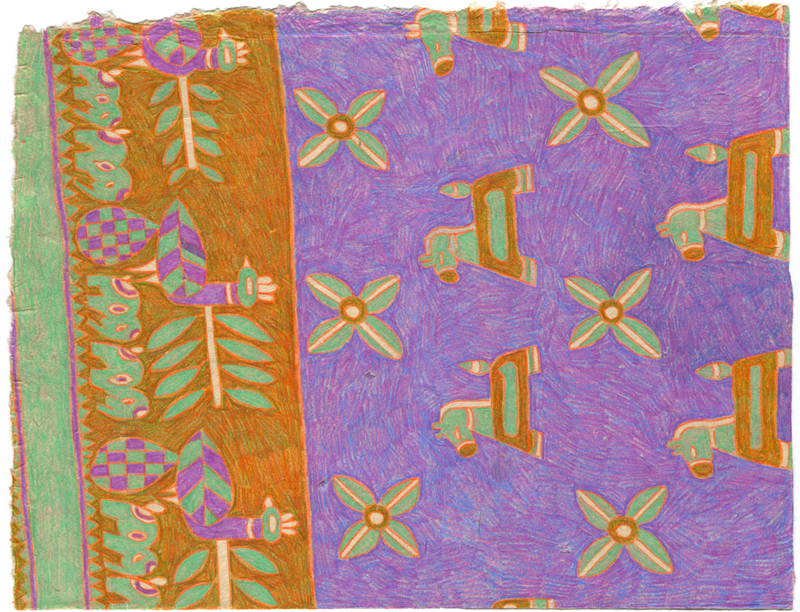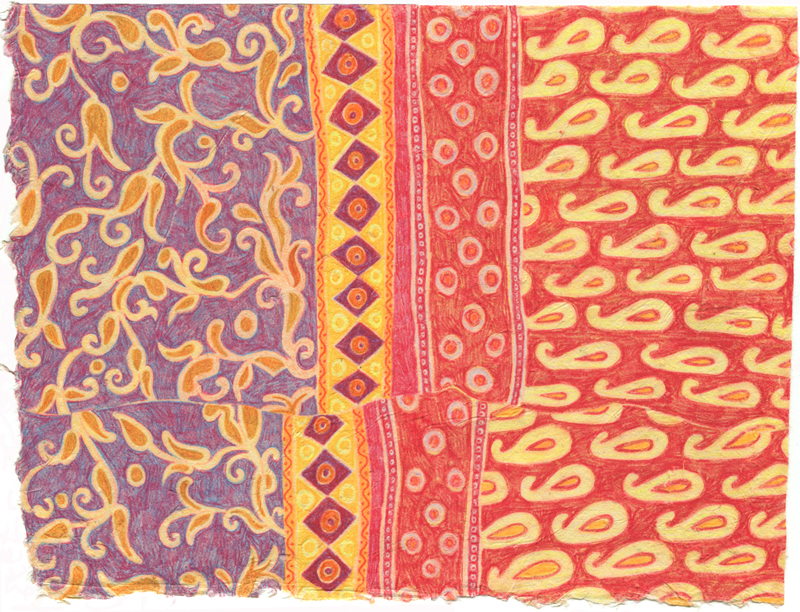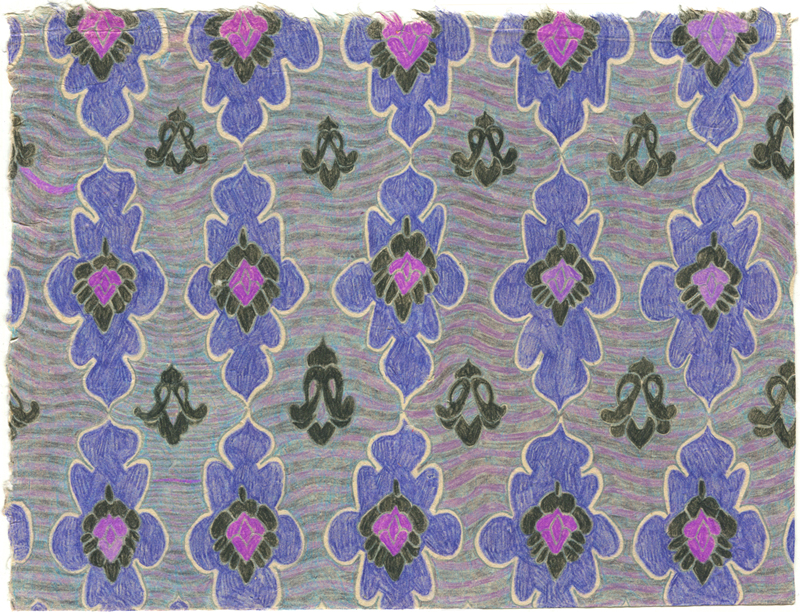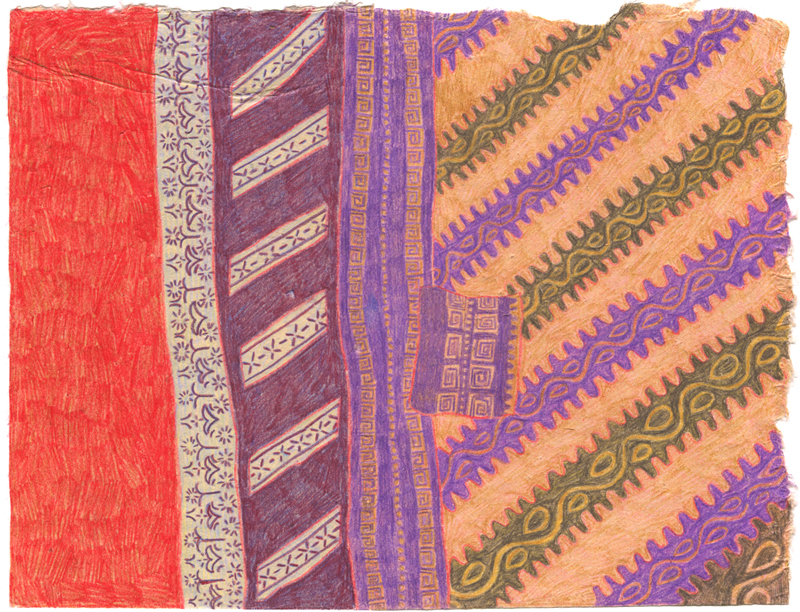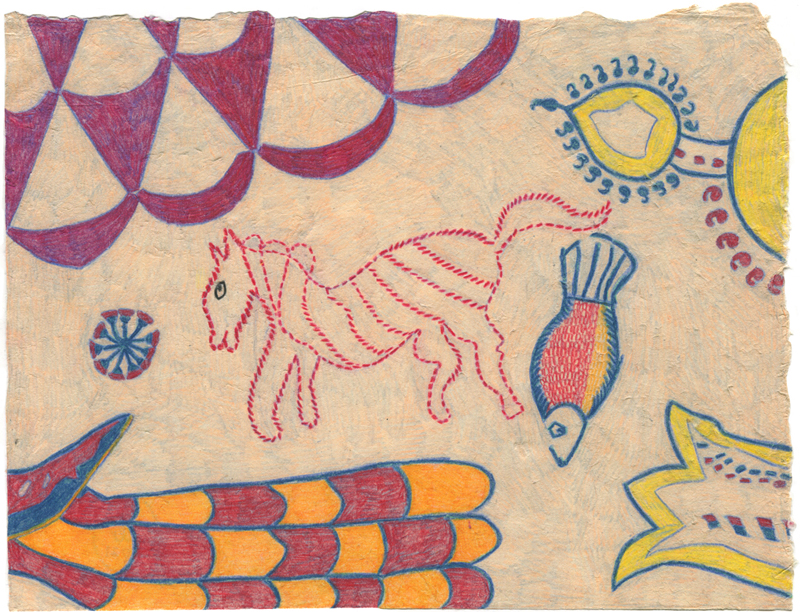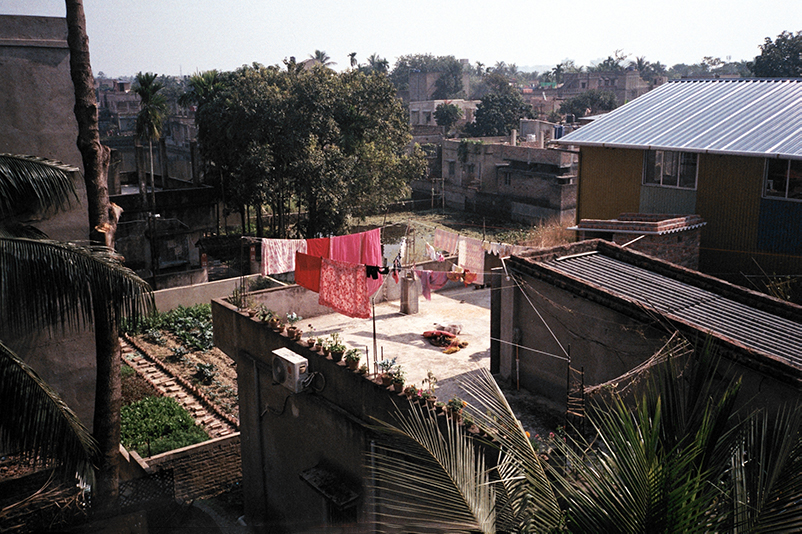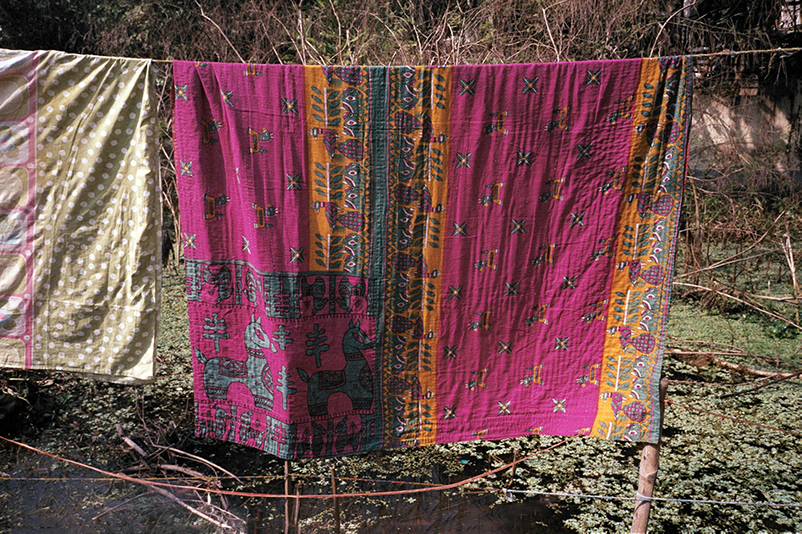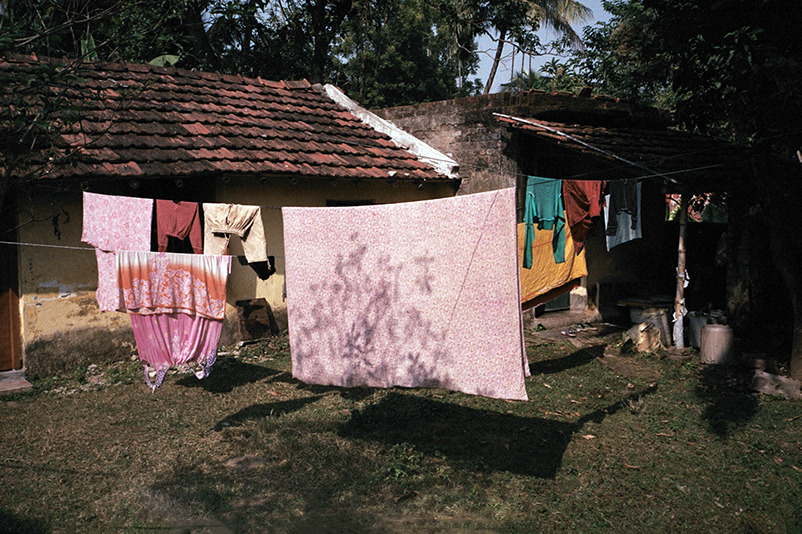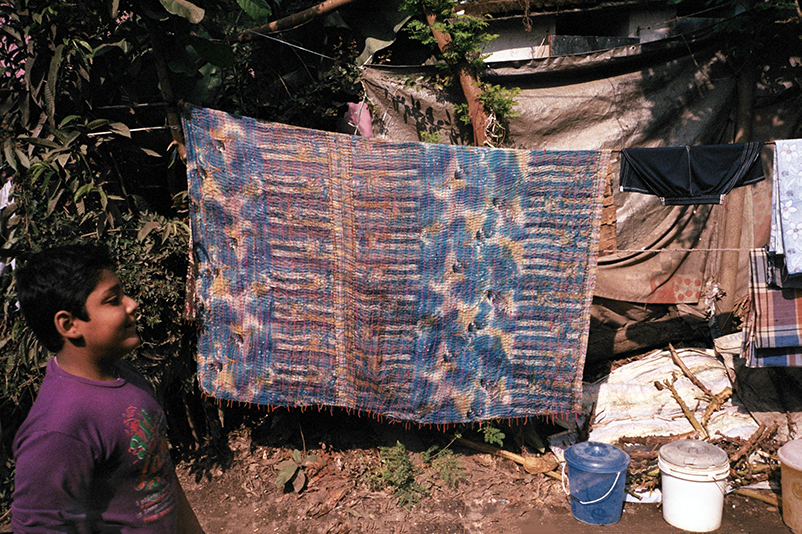

At the beginning of 2020, I was fortunate enough to spend three months at Chander Haat, an artist residency located in the suburbs of Kokata, India. The neighbourhood where I lived is called Khudiram Pally, and it can be taken as a representative example of how the city is organised: narrow and short streets that look rather improvised, low-height housing units that, however, have terraces where to keep hens, ponds that are, at the same time, a place for fishing and for worships and offerings, and for manual laundry.
During this time, I took note of two costumes related to fabrics. The first of them is the kantha technique, which is realised by women from West Bengal and Bangladesh. Kantha is the recycling of used saris by embroidering together several layers of fabric. The embroidery can be made of short parallel stitches, or can be more ornamental and create floral or geometric patterns, or even depict animal or human characters. The drawings I have realised are studies of some kanthas displayed at the Gurusaday Museum, located at the edge of Khudiram Pally.
The second element I paid attention to is the constant presence of laundry sun-drying in terraces and gardens. These colourful printed fabrics are a vibrant part of the landscape, and the drawings I realised taking them as reference are my attempt to register this visual richness.
> Some Notes on the Use of Textiles in Khudiram Pally,
2020-21, 14 drawings, colour pencils on Nepali handmade paper, 27 x 35 cm
